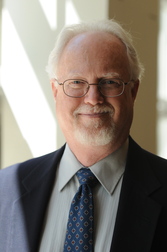Plenary Talks
Date: 28 May 2019 (Tuesday)
Time: 09:15 -10:15 (*Remarks: Conference Opening will start right before the plenary talk)
Venue: Wong Cheung Lo Hui Yuet Hall, 5/F, Lau Ming Wai Academic Building, City University of Hong Kong
Title: The Elusive the Ideal Aerosol Measurement
Plenary Speaker: Richard C. Flagan (Division of Chemistry and Chemical Engineering, California Institute of Technology)
Abstract: It has been nearly half a century since Sheldon Friedlander (J Aerosol Sci. Vol. 2: 331- 340, 1971) introduced a framework for characterizing aerosol instruments, and identified the ideal as an instrument that would continuously provide perfect resolution of size and chemical composition. In spite of major efforts and advances in aerosol measurement methods, we have not yet approached that ideal. This presentation will examine the progress, some of the challenges that have been encountered, and aspects of ideal measurements that were not considered in that original analysis. Advances include the aerosol mass spectrometers have added a composition dimension to real-time aerosol measurements, but only over a limited size range, from about 40 nm to 1 µm. Differential mobility analyzers (DMAs) have been built that approach the theoretical limit to their resolving power, and have been pushed to ever smaller particles. A new classifier, the opposed migration aerosol classifier (OMAC), changes the scaling that determines when diffusion begins to degrade resolution in mobility analysis and, thereby, increases the dynamic range and the resolution that is, theoretically, attainable. Scanning the voltage in the DMA has enabled much more rapid size distribution measurements than were possible. While many advances toward Friedlander's ideal instrument have been reported, close scrutiny of instrument performance has revealed previously unidentified or under appreciated sources of uncertainty. Detailed simulations of flows, electric fields, and particle trajectories in voltage-scanning DMA (SMPS) measurements have revealed that the instrument response function differs from that predicted by the first-order models that are almost universally used for data analysis, but the computational cost of these simulations was too high to be practical for all DMAs and their full range of operating conditions. Alternate, more cost effective methods for quantitatively determining the response function of the full instrument, i.e., that of the integrated system comprising the DMA, CPC or other detector, and all plumbing. Progress toward the ideal instrument is substantial, but still incomplete. Nonetheless, there is a growing need to add another dimension to Friedlander's analysis; that dimension is geographic resolution. Networks of instruments to provide the community-wide exposure assessment needed for quantifying the links between the ambient aerosol properties and both human health and climate. Measurements in urban air-sheds need to resolve scales of ~100 m to capture near roadway effects, while global networks are needed for studies of climate and validation of satellite remote-sensing methods for assessing exposures to particulate matter around the world. Very low cost optical surrogates for PM2.5 measurements are increasingly being used to provide some of that data, but many questions have arising regarding the quality and suitability of the data that such sensors deliver. The question of how to develop cost-effective, scientifically-valid measurement strategies to address specific scientific questions will be examined, and some progress toward such instruments will be presented.

Date: 29 May 2019 (Wednesday)
Time: 09:00 -10:00
Venue: Wong Cheung Lo Hui Yuet Hall, 5/F, Lau Ming Wai Academic Building, City University of Hong Kong
Title: Atmospheric Aerosols: From Climate to Numerical Weather Prediction
Plenary Speaker: Olivier Boucher (Institut Pierre-Simon Laplace, Paris)
Abstract: Atmospheric aerosols influence the climate system through numerous ways. They do so directly by interacting with shortwave and longwave radiation and by providing nuclei for cloud formation, but also indirectly through their impacts on the global carbon cycle as they modify surface temperature, precipitation, nutrient deposition, the quality of incoming light for terrestrial ecosystems as well as soil acidity. As the emissions of aerosols and aerosol precursors decrease in response to much-needed air quality policies, there is a risk that global warming accelerates as the cooling effect from aerosols wanes. We will review some of the recent progress made in quantifying these climate effects as well as some of the remaining challenges facing the aerosol research community. We will show in particular that quantifying the climate effects of atmospheric aerosols makes it necessary to model accurately their spatial and temporal variability on a relatively small scale. This in turns offers an opportunity to increase the consistency and improve the quality of numerical weather forecasts. Incorporating atmospheric aerosols in numerical weather prediction models requires accurate observations, appropriate data assimilation techniques and raises new challenges in atmospheric radiative transfer.

Date: 30 May 2019 (Thursday)
Time: 09:00 -10:00
Venue: Wong Cheung Lo Hui Yuet Hall, 5/F, Lau Ming Wai Academic Building, City University of Hong Kong
Title: Multiphase Chemistry in the Indoor Environment
Plenary Speaker: Jonathan Abbatt (Department of Chemistry, University of Toronto)
Abstract: We increasingly spend most of our lives indoors. And yet, the nature of indoor chemistry is not as well studied as that in the outdoor environment. This talk will address the multiphase chemistry that is specific to indoor environments. In particular, the indoor environment is characterized by having a very high surface-area-to-volume ratio that leads to species partitioning strongly to indoor surfaces. Outside of direct sunlight the indoor environment is very dark. For that reason, the major indoor oxidant is ozone, transported from outdoors. Ozone is efficiently lost on surfaces via heterogeneous uptake. Reaction systems that will be addressed specifically in the talk include: ozone reactions with skin and cooking oils, the processes controlling the indoor abundance of HONO, the impact of chlorine bleach washing on the indoor environment, and influence of third-hand smoke on the composition of indoor aerosol.
